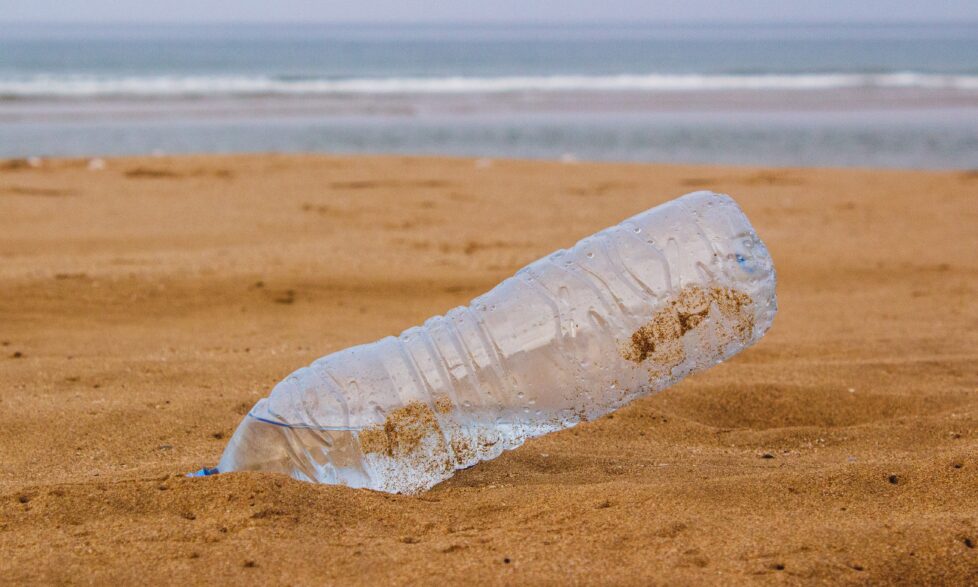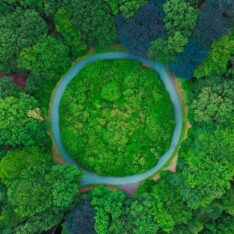Why going plastic-free could have environmental side effects - and four ways we can prevent this
Calls to reduce plastic, especially single-use, are essential and welcome. Since the BBC’s Blue Planet series, a tide has turned in the UK. It now feels like almost every day there’s a new announcement to tackle the plastics issue.
But while urgent action is required, I’m concerned we’re simplifying the challenge. As ever, much of the messaging around this complex issue has ignored nuance and we have been left with the message that plastic is bad – and any other material must therefore be better.
In the scramble to seek solutions, we need to make sure they don’t have unintended consequences.
Biodegradable won’t make the issues disappear
Biodegradable alternatives have been touted as a replacement to plastic, and many companies are switching to biodegradable in a bid to break-free from plastic.
The term certainly sounds much more ‘environmentally friendly’. But biodegradable packaging is only beneficial if it is disposed of properly. There are a range of terms – biodegradable, compostable, home compostable – which determine the correct conditions required for the material to breakdown as intended. But most people don’t know this.
The UK’s waste infrastructure is currently not set up to deal with biodegradable materials. To break down properly they need to be sent to an industrial composting facility or anaerobic digestor. These facilities do exist for food waste, but only about 50% of UK households have access to food waste collections. Of those, it’s not clear if councils will accept waste that has packaging in it.
If biodegradable materials end up in landfill, which is the most likely outcome at present, they will biodegrade anaerobically and release methane, a climate-changing greenhouse gas far stronger than carbon dioxide.
If they end up in recycling, they will contaminate other plastics and lower the quality of recyclate (the materials gathered to be recycled). If it ends up in oceans, conditions are not suitable for degradation so it makes no dent on the marine litter it’s supposed to be tackling.
Biodegradable is not a bad innovation, but it should only be used in appropriate applications, where people know how to dispose of it at the end of its life.
Papering over the problems
Plastic has become a focus because it’s so visible. But for most materials, extraction, resource use and manufacturing processes – which are called ‘upstream activities’ – have greater environmental impacts – we just can’t see them.
In fact, when you compare materials from a whole lifecycle perspective, plastic often comes out favourably.
For example, plastic is lightweight, so requires far less carbon in transportation than heavier materials such as glass. Nor does it have the mining impacts of metals like aluminium.
I am by no means endorsing plastic, but we need to be careful about the materials we switch to – otherwise we might simply push the impact further upstream. For example, if we turn to materials that contribute to deforestation, the images of turtles with straws in their noses will just be replaced by, say, monkeys without homes.
A study by the Environment Agency showed that reusing shopping bags is key to reducing their environmental impacts. But to have a lower carbon footprint than a single-use plastic carrier bag, a paper bag needs to be reused 3 times. A cotton bag would need to be used 131 times. These figures are even higher if the plastic bag is reused as a bin liner, which they commonly are.
Also, when looking at other environmental considerations such as toxic pollution of land and water, acid rain, resource depletion and deforestation, both paper and cotton have a far higher environmental impacts – largely due to their extraction and production.
I am by no means endorsing plastic, but we need to be careful about the materials we switch to – otherwise we might simply push the impact further upstream. For example, if we turn to materials that contribute to deforestation, the images of turtles with straws in their noses will just be replaced by, say, monkeys without homes.
So, what can we do?
High-profile anti-plastics campaigns are fantastic in getting people questioning the everyday objects we’ve become so accustomed to, and for making businesses and governments act. There’s a great opportunity to capitalise on the change in public mood to achieve real progress in reducing our impact on the planet.
Here are four ways to tackle the problem more holistically:
- First and foremost, reduce. If the past 6 months has shown us one thing, people now know how to survive without a straw in their gin and tonic. As individuals, we can get rid of many superfluous things in our lives like straws, coffee cups and water bottles (check out our zero-waste survival kit will help you slash plastic use).
- Invest to improve the UK’s recycling infrastructure and facilities. We need a more circular economic system with better recycling and recovery of materials. This will reduce both the upstream environmental impacts and the downstream problems of plastic pollution, creating a win-win. The proposed bottle deposit return scheme is a step in the right direction but we also need the capability to recycle more materials.
- Use the new public interest to educate and improve behaviour in recycling. The latest figures show that from 2010 – 2016 the UK recycling rate has remained relatively static at around 40-45%. WRAP, for example, is doing some great consumer-facing campaigns to get people recycling more, and recycling better.
- Companies need to simplify the materials in their products and packaging, such as only using commonly used, single-plastic types that are easier to recycle. They need to use more genuinely sustainable alternatives (from a lifecycle perspective) and more recycled content to help develop the market for recycled materials. Many innovations such as new solutions for PET recycling by Unilever and Ioniqa are in development, and hopefully this focus and sense of urgency will provide more impetus to scale these up.
This information has come from the research we’ve been doing for with partners on sustainable products and transitioning towards a circular economy.
The circular economy: cracking the challenge
The circular economy is one of the biggest challenges - yet most exciting opportunities - for today's businesses. This guide will help your business get started, and explain the benefits of embracing the circular economy
Download PDF









